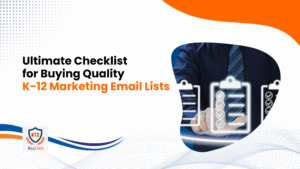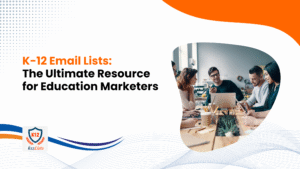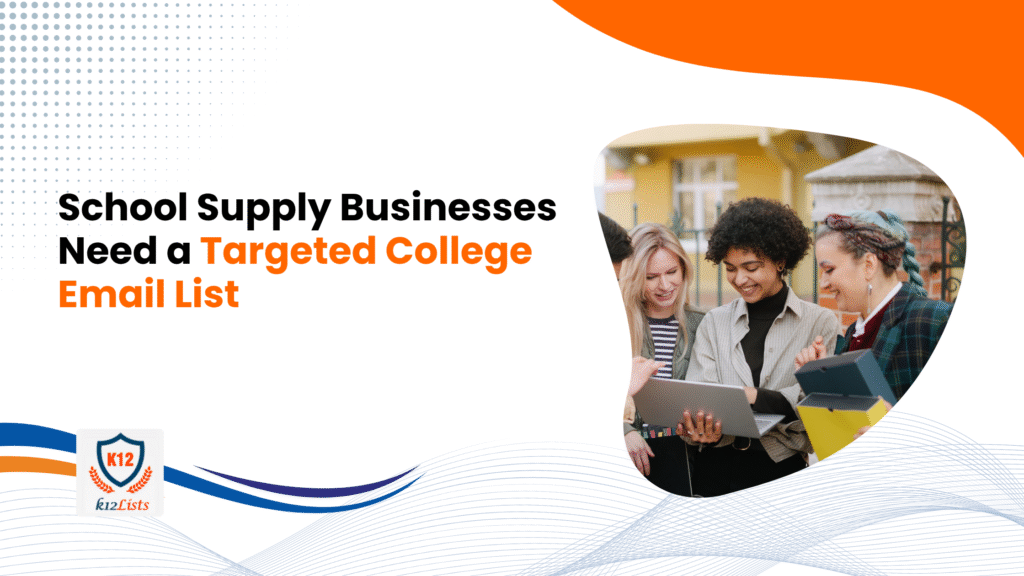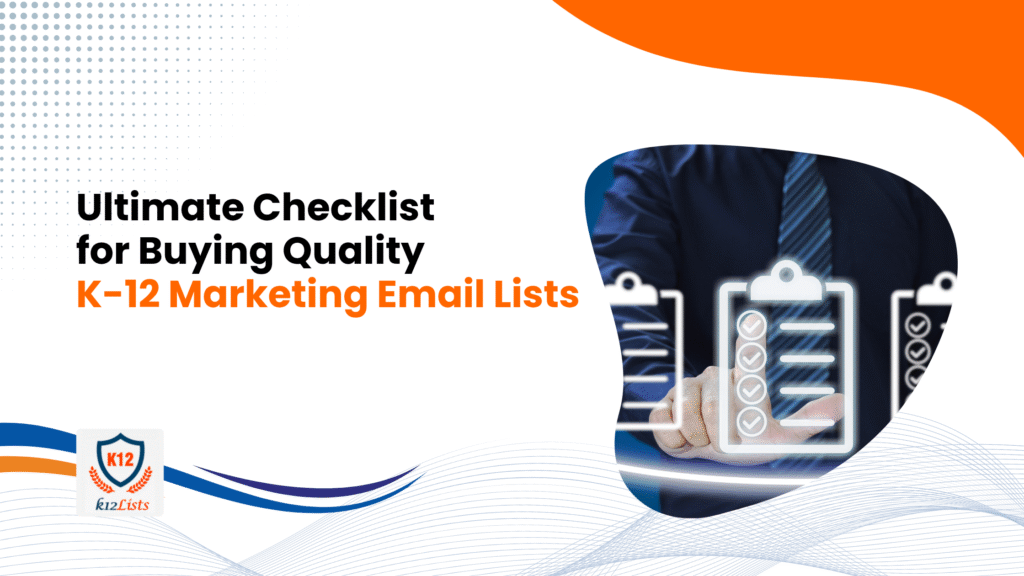The K12 STEM education market is booming—and for good reason. With increased emphasis on preparing students for future careers in science, technology, engineering, and math, schools across the country are investing in STEM-focused curricula, tools, and resources. This presents a massive opportunity for STEM product companies looking to make an impact in the education sector.
But here’s the challenge: reaching the right educators at the right schools with the right message. Between gatekeepers, tight schedules, and information overload, even the best products can go unnoticed.
That’s where email marketing comes in. For STEM product companies looking to reach schools, email lists can be a highly effective channel—when used strategically.
In this post, we’ll explore how to use email marketing to power up your educational outreach and build meaningful connections with K12 educators who are looking for the right STEM solutions.
Why Email Marketing is a Strong Choice for Reaching K12 STEM Educators
When it comes to educational outreach strategies, email marketing stands out for several key reasons:
- Direct Communication: Reach educators where they work—right in their inbox.
- Cost-Effective: Cheaper than print ads or in-person outreach, yet scalable.
- Scalability: With one campaign, you can connect with thousands of educators nationwide.
- Targeted Messaging: Customize your message by subject, grade level, or school type.
- Measurable Results: Open rates, click-throughs, and conversions give you real-time feedback.
- Relationship Building: Stay top-of-mind with thoughtful follow-ups and value-added resources.
With the right strategy, email becomes more than just a channel—it becomes a way to start conversations that convert.
Building Your Foundation: The Importance of a High-Quality K12 Email List
No matter how compelling your email is, it won’t make an impact if it never reaches the right people. That’s why your email list is everything.
As you know from K12 Lists, a high-quality K12 email list is the crucial first step in your marketing outreach. Here’s what to look for:
- Accuracy: Ensure the contact details are up to date.
- Recency: Fresh data ensures your messages reach current decision-makers.
- Segmentation: The ability to target by job title, subject, and grade level.
- Compliance: Lists that follow email marketing laws like CAN-SPAM and GDPR (if applicable).
Start with a solid list, and you’ll already be ahead of the curve.
Crafting Compelling Email Content for STEM Educators
Even the best list needs strong content to match. When marketing STEM products to schools, your emails should resonate with educators’ real needs and challenges.
Here’s what works:
- Focus on Educational Value
Show how your product supports curriculum goals like NGSS, boosts student engagement, or improves learning outcomes. - Offer Practical Resources
Include lesson plans, teaching guides, or free trial access. Make your emails feel like a gift, not a pitch. - Showcase Real-World Applications
Highlight how your tool prepares students for careers in robotics, environmental science, coding, or engineering. - Address Pain Points
Help teachers overcome common challenges in STEM education, such as limited resources or lack of student engagement. - Keep it Concise
Educators are busy—get to the point quickly and clearly. - Use Visuals
Images or videos showing your product in action can bring your message to life. - Include Clear Calls to Action (CTAs)
Whether it’s “Request a Demo,” “Download Lesson Plan,” or “Watch Video,” make it easy for educators to take the next step.
Segmenting Your Email Lists for Targeted Impact
To get the most from K12 email marketing for STEM, segmentation is key. Instead of blasting the same message to everyone, tailor your emails to specific groups for better results.
Consider segmenting by:
- Subject Area: Target science teachers, tech instructors, or math coordinators.
- Grade Level: Customize messages for elementary, middle, or high school.
- Job Role: Reach classroom teachers, department heads, or STEM program coordinators.
- School Type: Differentiate messaging for public, private, or charter schools.
- Curriculum Focus: Highlight relevance for schools with STEM labs, robotics clubs, or project-based learning programs.
The more relevant your message, the more likely it will resonate and drive action.
Compliance and Best Practices
Email marketing to schools isn’t just about results—it’s about respecting your audience.
Follow these best practices to ensure ethical, legal outreach:
Obtain Explicit Consent
Make sure your email lists come from reliable sources that gather opt-in contacts.
Provide Easy Opt-Out Options
Include a clear unsubscribe link in every message.
Maintain Accurate Records
Regularly clean your lists to remove bounces or outdated contacts.
Be Transparent
Let educators know who you are and why you’re reaching out.
Respect Sending Frequency
Don’t flood inboxes. A thoughtful cadence is more effective than constant emails.
Measuring Your Success
One of the biggest benefits of email marketing is the ability to track performance. Keep an eye on these metrics:
- Open Rate – Are your subject lines getting attention?
- Click-Through Rate (CTR) – Are recipients engaging with your content?
- Conversion Rate – Are they signing up for demos or downloading resources?
- Bounce Rate – Is your list accurate?
- Unsubscribe Rate – Are you providing value or turning people off?
Review and refine based on what the data tells you. Small tweaks can lead to big improvements.
Examples of Effective Email Campaigns for STEM Products
Need inspiration? Here are a few proven email campaign formats for reaching educators:
- New Product Launch
Introduce your latest STEM tool with a clear list of classroom benefits. - Webinar Invitation
Host a session on how to teach STEM with your product and invite educators to join. - Free Resource Giveaway
Offer downloadable STEM worksheets, activity guides, or experiments. - Case Study Email
Share a story of a school using your product successfully, with results and testimonials. - Back-to-School Promo
Create a timely offer when schools are planning purchases and curriculum for the year. - Each of these campaigns offers value first—and drives engagement as a result.
Conclusion
The demand for STEM education is growing—and so is the opportunity for companies with tools that make learning exciting and effective. For STEM product companies looking to reach schools, strategic email marketing backed by high-quality data is a proven way to break through the noise and build lasting relationships with educators.
At K12 Lists, we specialize in helping educational marketers connect with the right people in the right schools through targeted teacher email lists. Whether you’re launching a new product or scaling your outreach, the right list and message can make all the difference.
Tap into the power of email marketing and help shape the future of STEM education—one classroom at a time.







